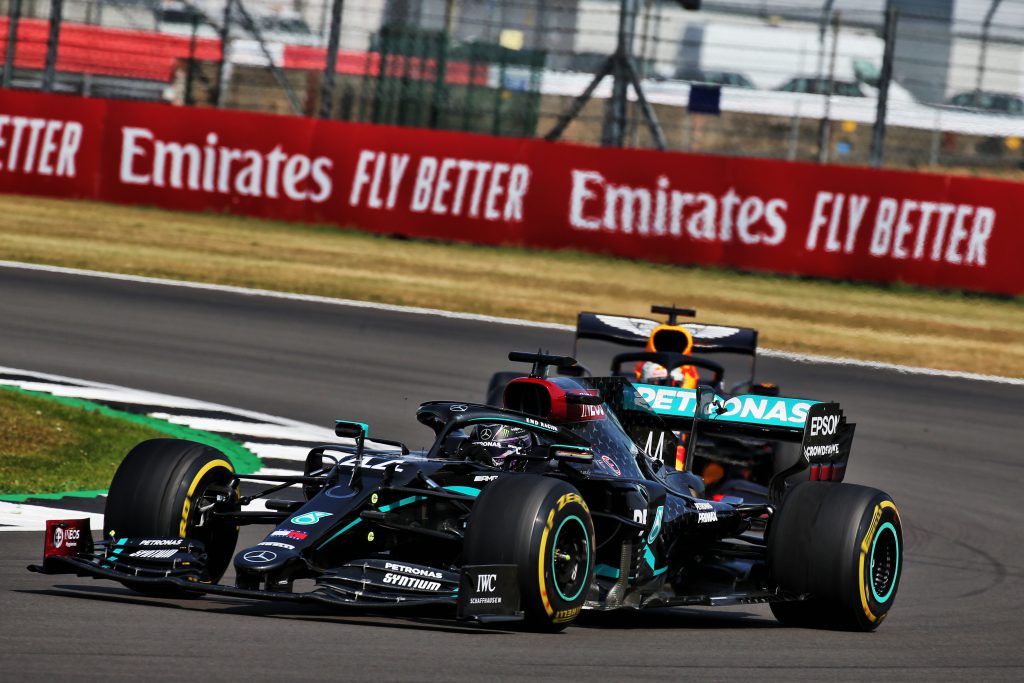Up Next

Red Bull and Max Verstappen ran rings around tyre-troubled Mercedes in the heat, soft compounds and high minimum pressures of Silverstone to take a commanding victory in the 70th Anniversary Grand Prix.
Even within the shorter stints of the two-stop that the softer tyre choice had moved almost everyone towards, the Mercedes’ rear tyres were in shreds by the end of the stints. Those on the Red Bull were absolutely fine.
As they alighted from their cars afterwards under the still-blazing sun the first thing Lewis Hamilton said to Verstappen was, “You didn’t have any trouble with your tyres, then?”
“None,” shrugged Max. “On the middle stints with the mediums I had to manage them a bit, but that was all.”
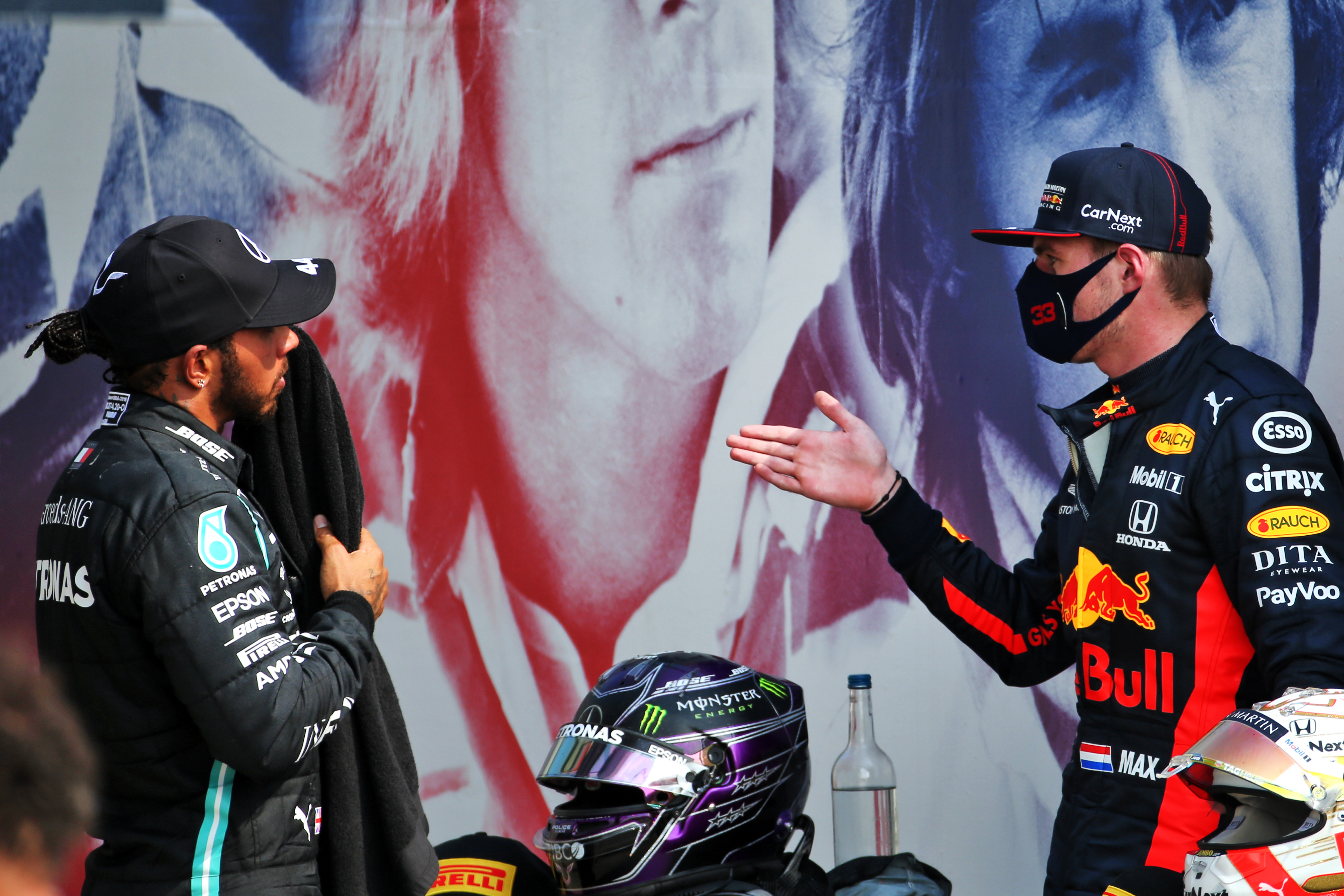
The tyre range was adjusted from the British GP at the behest of Formula 1 in order to differentiate the two Silverstone races. How much was that, how much the hot weather, how much the increased minimum pressures after the failures of last week, cannot be known. But the combined effect transformed the structure of the race from a week ago.
Verstappen was able to use his hards to run a much longer first stint than the Mercedes, which pitted with him snapping at their blistered medium-shod heels.
Could Hamilton hang on for an unlikely one-stop, get those sorry-looking tyres to complete 38 laps? Of course he couldn’t
He then effectively ‘overcut’ himself ahead (the Red Bull passing polesitter Valtteri Bottas on its out-lap), so much had Bottas and Hamilton been having to control their pace to keep the rear rubber in shape.
That middle stint – with Verstappen now on the mediums, his two rivals on the hards, but it making no difference to their relative competitiveness – was when Verstappen drove home his dominance, leaving the Mercedes drivers squabbling over his crumbs.
Bottas was a disgruntled third, having led Hamilton until being called in for his second stop 10 laps earlier than his team-mate. Which gave Hamilton a massive grip advantage in the final stint, enough to pass Bottas on-track and take the point for fastest lap.
“I think we were asleep with our strategy,” said an unusually forthright Bottas afterwards.
The paranoia was understandable but it wasn’t a conspiracy to favour Hamilton. There was a sound reason for Bottas being brought in when he was.
The vibration from his rear tyre was becoming serious – and the tyre itself looked in ugly shape on screen. Set against the backdrop of his tyre failure last week, with it being very plain that Verstappen ahead of him had comfortably more pace and with Charles Leclerc’s one-stopping Ferrari just over a pitstop’s-worth of time behind, it was time to bank that track position on lap 32 of 52.
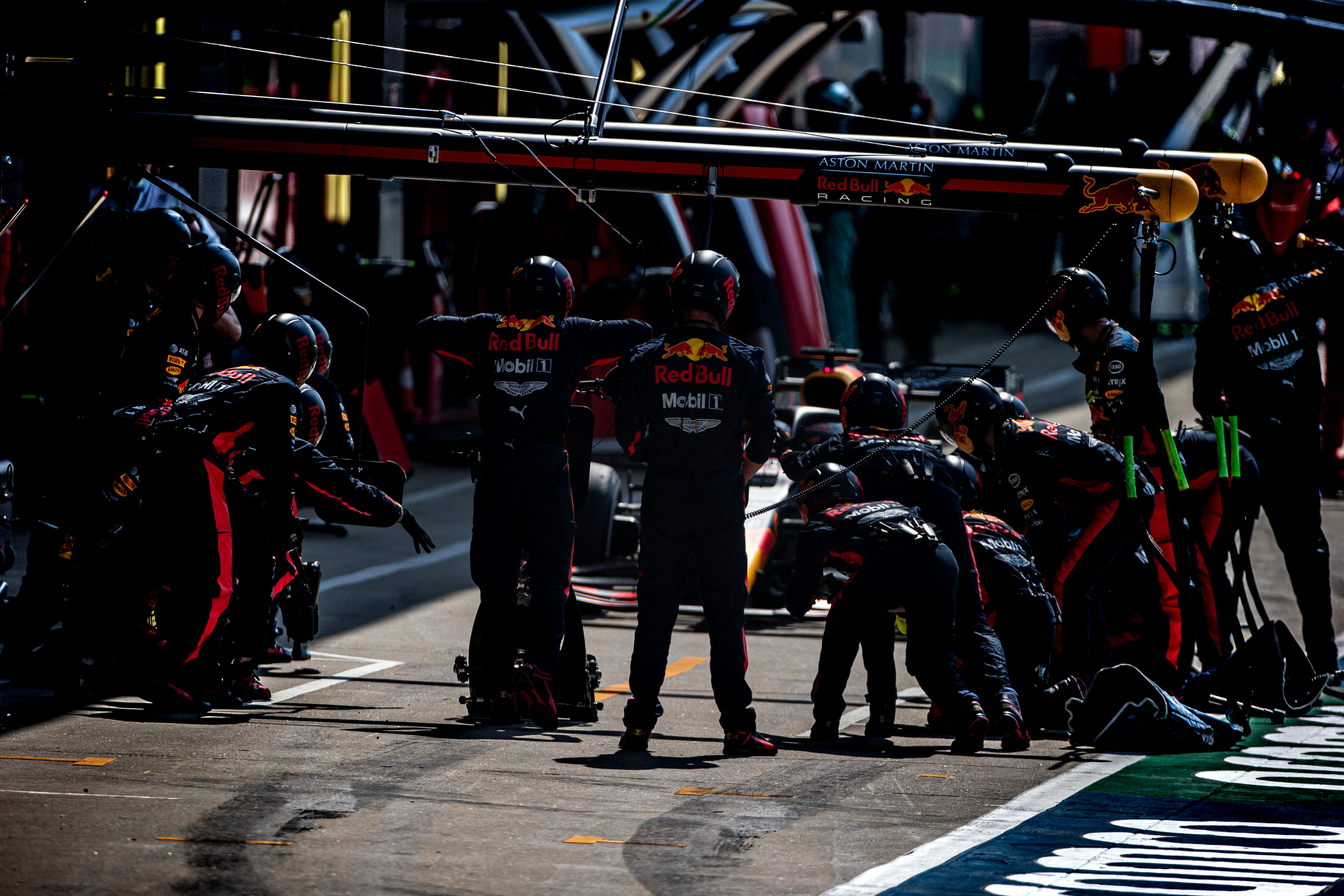
By chance, that was the same lap that Red Bull was bringing in Verstappen from 2.4s in front. They left in the same order with Hamilton now out-of-phase and yet to make his second stop leading.
There was no plan to keep him there. But he was at this stage untroubled by the vibrations Bottas had suffered, even though his tyres looked comparably ugly and the longer he stayed out there, the more that question began to suggest itself. Especially as the tyres that came off Bottas’s car showed they’d still had plenty of tread left.
Mercedes kept reassuring Hamilton of this. He asked if they were sure. Yes, they were. He shouldn’t worry. So could he hang on for an unlikely one-stop, get those sorry-looking tyres to complete 38 laps?
Of course he couldn’t, but Red Bull had only just told Verstappen he’d better close the Mercedes down when Mercedes finally brought Hamilton in with just 10 laps to go.
“The risk of a blow-out through a fast corner was just too much,” said Hamilton. On his much newer rubber he was able to catch and pass the other Mercedes but was still 11s adrift of the flying Red Bull at the end.
In the collecting area the left rear tyres of both Mercedes were in horrific shape, with half the tread missing outboard of the circumferential ring of blisters.
Gliding up to a superb fourth at the end from eighth on the grid was the one-stopping Ferrari of Leclerc.
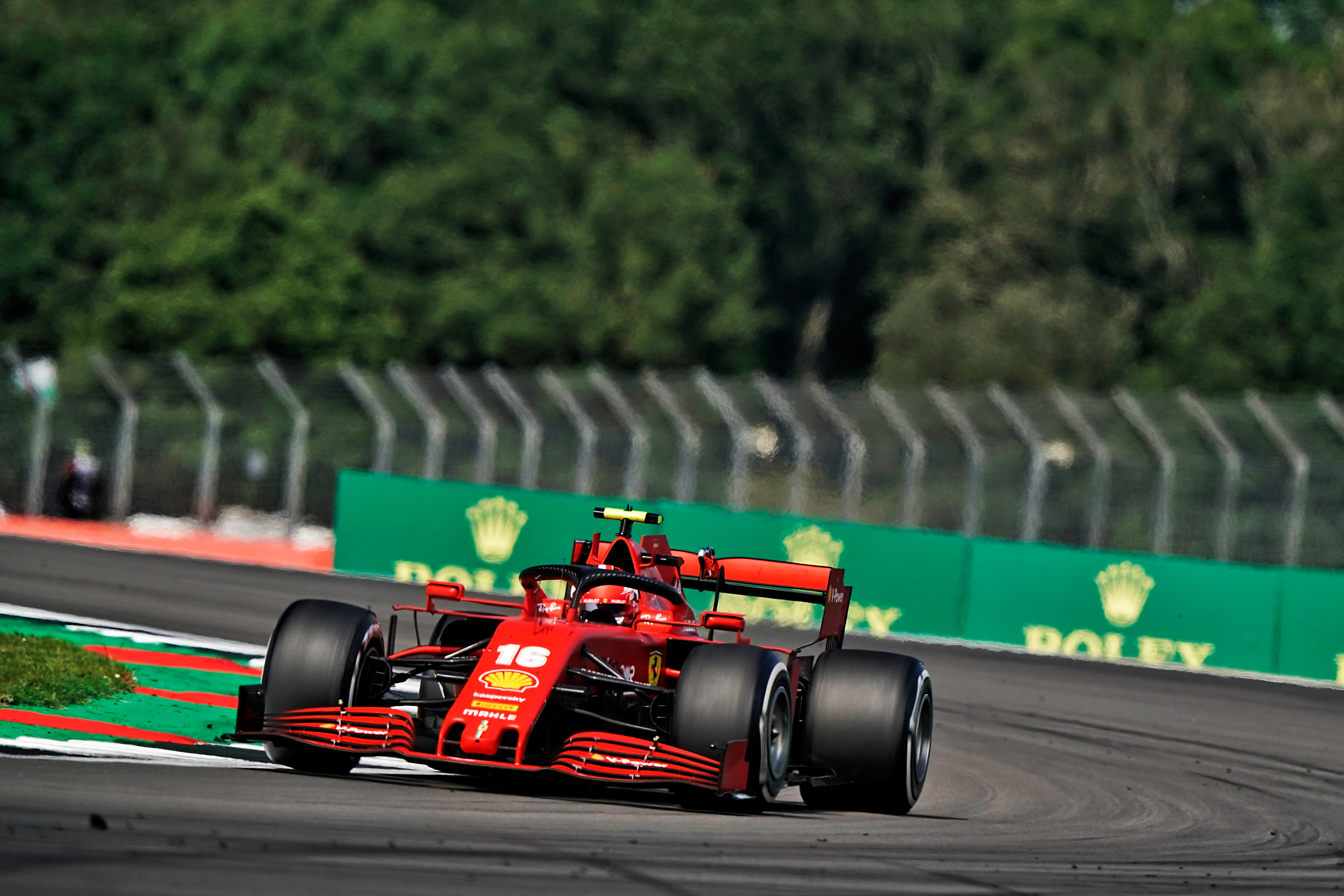
He’d done a fantastic job in the early part of his second stint to make time up on the ostensibly faster Racing Points, fooling them into believing that he, like them, was stopping again. He wasn’t. They pitted out of his way and he was home-free, his 34-lap-old hards still in great shape by the end.
Nico Hulkenberg – who’d qualified a starring third – was passed off the grid by Verstappen but ran as the lead pink car until forced to make a third stop for a blistered rear, dropping him to seventh. This left Lance Stroll to be picked off by the hard-charging Alex Albon who’d partially made amends for his continuing qualifying struggles with some very brave moves in the other Red Bull (that on Kimi Raikkonen between Woodcote and Copse verged on terrifying). He was flying late in the race, setting a fastest lap virtually identical to Verstappen’s.
It didn’t much matter if Verstappen nudged his tyres a little bit into the red zone. Because the Mercedes were in way worse shape
The RB16 was the best it’s been all season, the W11 the worst – and Verstappen did the rest. He was quite brilliant all weekend.
Uniquely, he’d got through Q2 on the hard (the C2) when everyone else, Mercedes included, did it on the C3 medium. He then understood sooner than anyone that, in contrast to what his pitwall was telling him at the time (around lap 10), he should push up to the two Mercedes ahead of him, not back away from them.
The pitwall were just being engineers, monitoring his tyre temperatures and noting they were approaching performance-damaging levels. He was being a racer, a racer what’s more, who could see with his own eyes that when Hamilton ahead of him gave it everything through the fast corners, a ring was forming around the Mercedes’ left-rear: blisters.
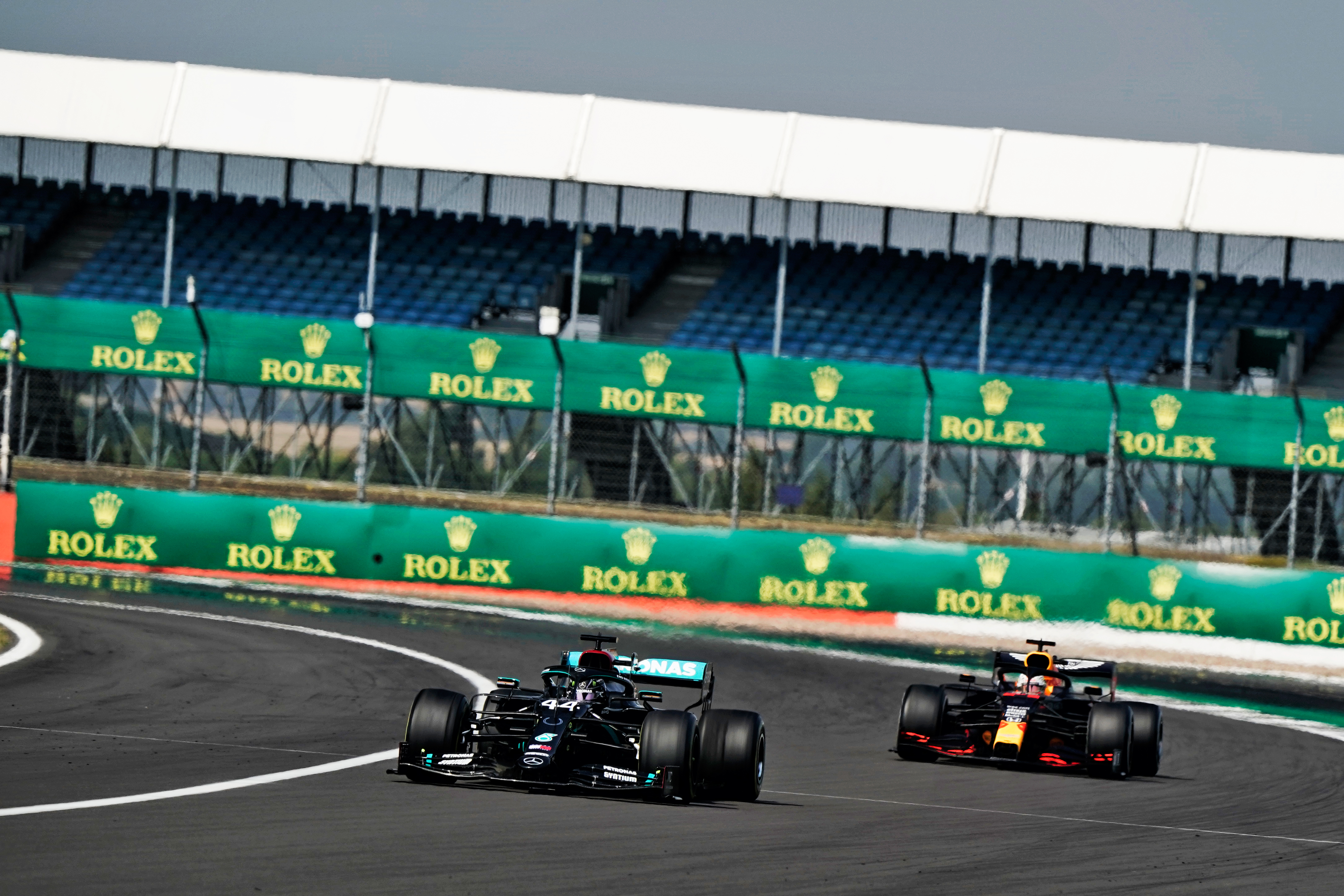
So he gave his ‘I’m not gonna drive like a granny’ comment, putting a bit of gung-ho spin on what actually was a very logical approach. Mercedes was the only competition – the Racing Points falling steadily back – therefore it didn’t much matter if Verstappen nudged his tyres a little bit into the red zone. Because the Mercedes were in way worse shape.
Given that they were on the medium and him the hard, this was the time to spend that performance, not conserve it. Just like everything else about his weekend, he was right.
It was a brilliant demonstration of pummelling but clear-headed performance. Red Bull had massaged a good high-speed balance from an even lower-drag package than it ran last week.
It treated its tyres nicely, the team was pin-sharp on strategy calls and Verstappen did the rest, taking time out to make his little jokes with race engineer Gianpiero Lambiase once everything was under control.
Mercedes went into this race more concerned than the outside world might have imagined, given how comfortably it had locked out the front row, Bottas ahead of Hamilton this time.
Its concern was always tyre behaviour in the very high temperatures forecasted for race day. It had struggled in such conditions in the Friday practices of the Styrian and British GP weekends. But this time it had looked very strong in the high temperature race runs of Friday afternoon.
Yes, but the Mercedes were eating through the left-front. So their set-up into Friday sought to protect that tyre – and in so doing transferred more of the load onto the rears. Turns out, there just wasn’t the capacity there for the rears to accept that increased burden.

“Just about every car out there looked in better shape than us with regards to blistering,” said Andrew Shovlin, trackside engineering chief.
“We must have got something wrong with the car for them to be blistering like this,” said Hamilton from inside the cockpit.
Was it just the Mercedes was putting more load into them than any other? The Red Bull was lapping faster, thereby generating more load. Maybe the slightly lower power of the Honda was the differentiator.
Likely it’s more complex than that, possibly to do with being more affected than the others by the greater bulge in the crown of the tyre at the higher pressures and temperatures.
There was no need for Mercedes to take a risk, not when it seemed to have the fastest car. Sunday revealed that actually, it didn’t. Not with its new set-up
Would it have made any difference if Mercedes had opted for the Red Bull Q2 strategy and started the race on the hard? None whatsoever, as it turned out. The problem was there on both compounds.
The reason Mercedes hadn’t wanted to try that was that the hards – with only two sets allocated per car – were like gold dust and if you flat-spotted or otherwise damaged one of them in trying to set a fast Q2 time, your race was strategically destroyed.
There was no need to take that risk, not when it seemed to have the fastest car. Sunday revealed that actually, it didn’t. Not with its new front-protecting/rear-destroying set-up.
Further back Esteban Ocon drove his Renault to a neat one-stopping race to eighth, ahead of Lando Norris’ McLaren and Daniil Kvyat’s AlphaTauri.

Sebastian Vettel spun to the back at the first corner, was openly critical of the team’s strategy and didn’t dismiss the idea that his car was somehow different to his team-mate’s. It’s clear communication has broken down there. Will they even complete the season together?
Renault’s Daniel Ricciardo spent the first stint just behind the Racing Points but destroyed his tyres in the middle stint. The early second stop put him in traffic, in which he spun and finished out of the points, a drastic fall from grace after a great qualifying.
Raikkonen took little satisfaction from winning the Alfa-Haas-Williams struggle at the back. Kevin Magnussen retired because he had no tyres left.
So was this race significant, or just a novelty? Verstappen was just enjoying the day.
“I think today we were just very good on tyres,” he said.
“Now we go back to conservative tyres and basically most of the tracks we go to we are just doing a one-stop where I think it will be a bit harder for us because then nobody really has blistering that severe, and you don’t need to manage as much as we did today.”


